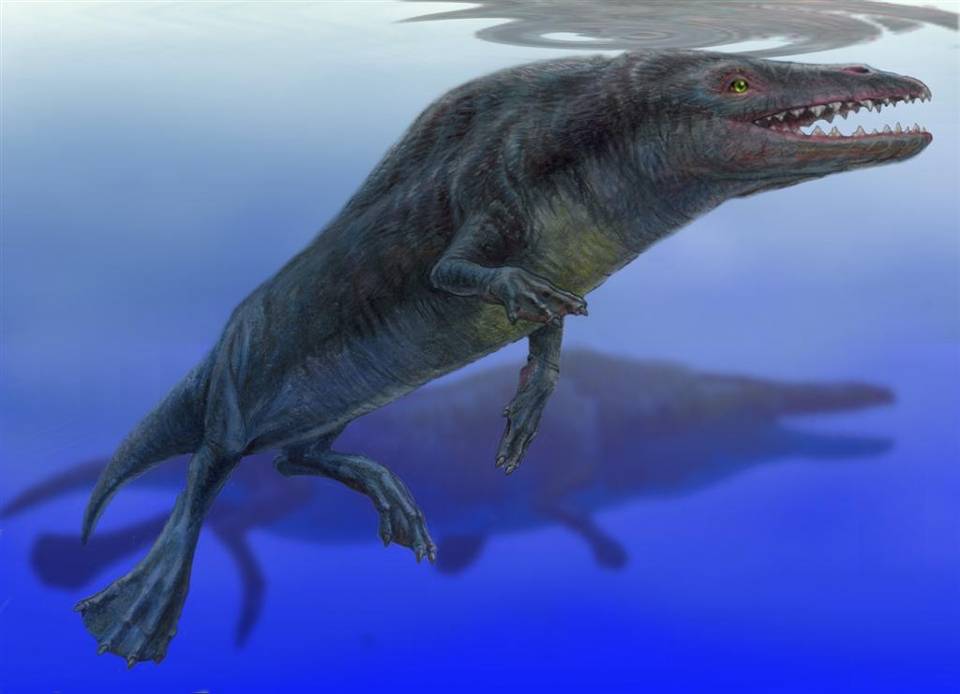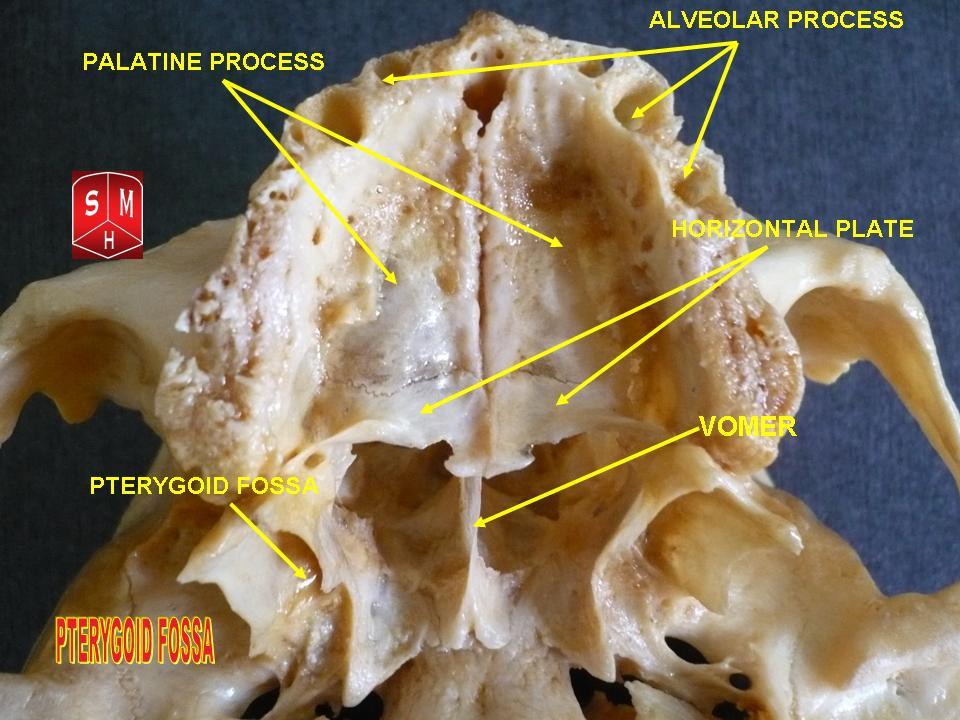|
Rodhocetus
''Rodhocetus'' (from ''Rodho'', the geological anticline at the type locality, and ''cetus'', Latin for whale) is an extinct genus of protocetid early whale known from the Lutetian of Pakistan. The best-known protocetid, ''Rodhocetus'' is known from two partial skeletons that taken together give a complete image of an Eocene whale that had short limbs with long hands and feet that were probably webbed and a sacrum that was immobile with four partially fused sacral vertebrae. It is one of several extinct whale genera that possess land mammal characteristics, thus demonstrating the evolutionary transition from land to sea. Description left, Size of ''Rodhocetus'' relative to a human. ''Rodhocetus'' was a small whale measuring long. Throughout the 1990s, a close relationship between cetaceans and mesonychians, an extinct group of cursorial, wolf-like ungulates, was generally accepted based on morphological analyses. In the late 1990s, however, cladistic analyses based on molec ... [...More Info...] [...Related Items...] OR: [Wikipedia] [Google] [Baidu] |
Evolution Of Cetaceans
The evolution of cetaceans is thought to have begun in the Indian subcontinent from even-toed ungulates (Artiodactyla) 50 million years ago (mya) and to have proceeded over a period of at least 15 million years. Cetaceans are fully aquatic mammals belonging to the order Artiodactyla and branched off from other artiodactyls around 50 Year#Abbreviations yr and ya, mya. Cetaceans are thought to have evolved during the Eocene (56-34 mya), the second epoch of the present-extending Cenozoic Era. Molecular and morphological analyses suggest Cetacea share a relatively recent closest common ancestor with hippopotamus, hippopotamuses and that they are sister groups. Being mammals, they surface to breathe air; they have five finger bones (even-toed) in their fins; they nurse their young; and, despite their fully aquatic life style, they retain many skeletal features from their terrestrial ancestors.Thewissen, J. G. M., L. N. Cooper, J. C. George, and S. Bajpai. 2009. From land to wa ... [...More Info...] [...Related Items...] OR: [Wikipedia] [Google] [Baidu] |
Protocetidae
Protocetidae, the protocetids, form a paraphyletic, diverse and heterogeneous group of extinct cetaceans known from Asia, Europe, Africa, South America, and North America. Description There were many genera, and some of these are very well known (e.g., ''Rodhocetus''). Known protocetids had large fore- and hindlimbs that could support the body on land, and it is likely that they lived amphibiously: in the sea and on land. It is unclear at present whether protocetids had flukes (the horizontal tail fin of modern cetaceans). However, what is clear is that they are adapted even further to an aquatic life-style. In ''Rodhocetus'', for example, the sacrum – a bone that in land-mammals is a fusion of five vertebrae that connects the pelvis with the rest of the vertebral column – was divided into loose vertebrae. However, the pelvis retain a sacroiliac joint. Furthermore, the nasal openings are now halfway up the snout; a first step towards the telescoped condition in mod ... [...More Info...] [...Related Items...] OR: [Wikipedia] [Google] [Baidu] |
Qaisracetus
''Qaisracetus'' is an extinct protocetid early whale known from the Eocene (Lutetian, ) of Baluchistan, Pakistan (, paleocoordinates ). Etymology The genus is named after the Qaisrani Baloch tribe which assisted Gingerich and his team during their field work. "Qaisra" is also etymologically close to the royal title used in Persian and many Indo-European languages (e.g. Kaiser, Czar, Caesar). The species is named for Muhammad Arif, former paleontologist at the Geological Survey of Pakistan who contributed significantly to archaeocete paleontology in Pakistan. Description ''Qaisracetus'' is known from a dozen specimens, all found in or near the type locality. Among them are several well-preserved elements, including a well-preserved skull, partial skulls and braincases, several vertebrae including an almost complete sacrum, a left innominate, ribs, and partial limb elements. ''Qaisracetus'' is smaller than '' Pappocetus'' and ''Babiacetus'' but larger than ''Indocetus''. ''Q ... [...More Info...] [...Related Items...] OR: [Wikipedia] [Google] [Baidu] |
Archaeoceti
Archaeoceti ("ancient whales"), or Zeuglodontes in older literature, is an obsolete paraphyletic group of primitive cetaceans that lived from the Early Eocene to the late Oligocene (). Representing the earliest cetacean radiation, they include the initial amphibious stages in cetacean evolution, thus are the ancestors of both modern cetacean suborders, Mysticeti and Odontoceti. This initial diversification occurred in the shallow waters that separated India and Asia , resulting in some 30 species adapted to a fully oceanic life. Echolocation and filter-feeding evolved during a second radiation . All archaeocetes from the Ypresian (56–47.8 mya) and most from the Lutetian (47.8–41.3 mya) are known exclusively from Indo-Pakistan, but Bartonian (41.3–38.0 mya) and Priabonian (38.0–33.9 mya) genera are known from across Earth, including North America, Egypt, New Zealand, and Europe. Although no consensus exists regarding the mode of locomotion of which cetaceans were capabl ... [...More Info...] [...Related Items...] OR: [Wikipedia] [Google] [Baidu] |
Auditory Bulla
The tympanic part of the temporal bone is a curved plate of bone lying below the squamous part of the temporal bone, in front of the mastoid process, and surrounding the external part of the ear canal. It originates as a separate bone (tympanic bone), which in some mammals stays separate through life. Evolutionarily, a portion of it is derived from the angular bone of the reptilian lower jaw. Surfaces Its postero-superior surface is concave, and forms the anterior wall, the floor, and part of the posterior wall of the bony ear canal. Medially, it presents a narrow furrow, the ''tympanic sulcus'', for the attachment of the tympanic membrane. Its antero-inferior surface is quadrilateral and slightly concave; it constitutes the posterior boundary of the mandibular fossa, and is in contact with the retromandibular part of the parotid gland. Borders Its lateral border is free and rough, and gives attachment to the cartilaginous part of the ear canal. Internally, the tympanic pa ... [...More Info...] [...Related Items...] OR: [Wikipedia] [Google] [Baidu] |
Pterygoid Fossa
The pterygoid fossa is an anatomical term for the fossa formed by the divergence of the lateral pterygoid plate and the medial pterygoid plate of the sphenoid bone. Structure The lateral and medial pterygoid plates (of the pterygoid process of the sphenoid bone) diverge behind and enclose between them a V-shaped fossa, the pterygoid fossa. This fossa faces posteriorly, and contains the medial pterygoid muscle and the tensor veli palatini muscle. See also * Pterygoid fovea * Scaphoid fossa In the pterygoid processes of the sphenoid, above the pterygoid fossa is a small, oval, shallow depression, the scaphoid fossa, which gives origin to the tensor veli palatini The tensor veli palatini muscle (tensor palati or tensor muscle of t ... * Pterygoid process References Bones of the head and neck {{musculoskeletal-stub ... [...More Info...] [...Related Items...] OR: [Wikipedia] [Google] [Baidu] |
Mandibular Foramen
The mandibular foramen is an opening on the internal surface of the ramus of the mandible. It allows for divisions of the mandibular nerve and blood vessels to pass through. Structure The mandibular foramen is an opening on the internal surface of the ramus of the mandible. It allows for divisions of the mandibular nerve and blood vessels to pass through. Variation There are two distinct anatomies to its rim. * In the common form the rim is V-shaped, with a groove separating the anterior and posterior parts. * In the horizontal-oval form there is no groove, and the rim is horizontally oriented and oval in shape, the anterior and posterior parts connected. Rarely, a bifid inferior alveolar nerve may be present, in which case a second mandibular foramen, more inferiorly placed, exists and can be detected by noting a doubled mandibular canal on a radiograph. Function The mandibular nerve is one of three branches of the trigeminal nerve, and the only one having motor innervat ... [...More Info...] [...Related Items...] OR: [Wikipedia] [Google] [Baidu] |
Qaisrani
Qaisrani is a Baloch clan of the Rind tribe. They live mostly in Balochistan, Pakistan Balochistan (; ; , ) is a province of Pakistan. Located in the southwestern region of the country, Balochistan is the largest province of Pakistan by land area but is the least populated one. It is bordered by the Pakistani provinces of Khybe ....Qaisranis crown 21st tribal chief Dawn (newspaper), Published 13 August 2002, Retrieved 6 September 2019 The current tribal chief is Sardar Mir Badshah Qaisrani since 2002. [...More Info...] [...Related Items...] OR: [Wikipedia] [Google] [Baidu] |
Eocene
The Eocene ( ) is a geological epoch (geology), epoch that lasted from about 56 to 33.9 million years ago (Ma). It is the second epoch of the Paleogene Period (geology), Period in the modern Cenozoic Era (geology), Era. The name ''Eocene'' comes from the Ancient Greek (''Ēṓs'', 'Eos, Dawn') and (''kainós'', "new") and refers to the "dawn" of modern ('new') fauna that appeared during the epoch.See: *Letter from William Whewell to Charles Lyell dated 31 January 1831 in: * From p. 55: "The period next antecedent we shall call Eocene, from ήως, aurora, and χαινος, recens, because the extremely small proportion of living species contained in these strata, indicates what may be considered the first commencement, or ''dawn'', of the existing state of the animate creation." The Eocene spans the time from the end of the Paleocene Epoch to the beginning of the Oligocene Epoch. The start of the Eocene is marked by a brief period in which the concentration of the carbon isoto ... [...More Info...] [...Related Items...] OR: [Wikipedia] [Google] [Baidu] |




